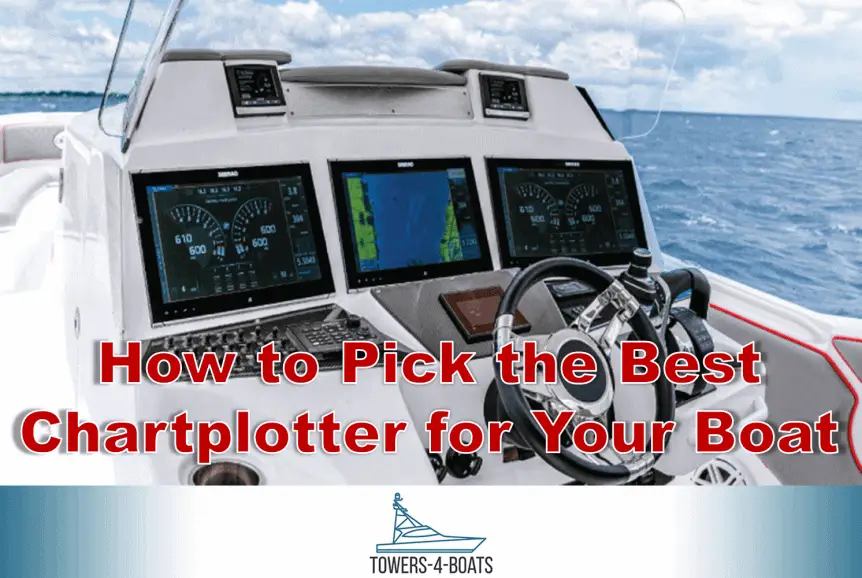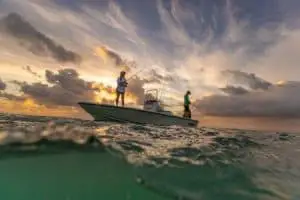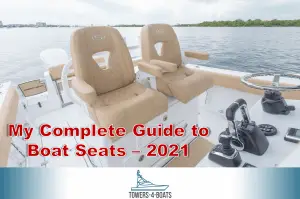How to Pick the Best Chartplotter for Your Boat
In their early days, chartplotters were simply GPS units that had built-in map sets. This was a big deal because now your GPS could show your position relative to charted navaids, channels, land, and even depth soundings. As technology got better and better, screens got larger, and even more functionality was added.
Today, chartplotters are better described as multi-function displays or MFDs. Yes, its most basic function is to display your GPS position atop a nautical chart. But easy networking means that almost any other part of your boat can be plugged into this one central display. You can see your radar atop the chart or in a separate window on the screen. You can display your depth sounder. With a networked AIS unit, you can see the position and direction of other AIS-equipped vessels in your area.
The magic that has made this possible is the universally accepted marine NMEA 2000 network. Standardized throughout the industry, the network is compatible across a wide range of devices and accessories. That means that you don’t even need to stick to the same brand of equipment, you can mix and match the best items to suit your needs.
Functions of a Chartplotter
So what all can you display or control from your MFD? Two items cannot be networked and must match your chartplotter. Radar and sonar devices require more data transmission than the NMEA 2000 infrastructure allows. For this reason, if you have a Garmin chartplotter, you’ll need to stick with Garmin’s radar and sounder options.
But NMEA 2000 networks have made many ancillary items on the boat compatible. At this point, the sky is the limit. Engine manufacturers are making NMEA 2000 wiring harnesses so that you can see real-time engine data on your big display. If you have an older engine, many companies are making add-on digital adapters so that you can view things like fuel flow. You can adapt tank senders to see fuel, water, or holding tank levels. Many marine stereo systems allow control from the chartplotter. Wind and environmental instruments, battery monitors, radios, and compasses are just a few of the other items you can plug into your chartplotter if you desire.
Major Brands
There are only a handful of major brands on the market.
Garmin is a world leader in navigation technology, be it for outdoor sports, aviation, or boating. Their units are easy to use and to set up. They use industry-standard NMEA 2000 networking on all of their marine devices. Garmin makes a wide variety of devices that range from pocket-sized handheld units to 16-inch multi-function displays for yachts.
Navico makes a popular series of chartplotter and specializes their equipment based on the type of boating you do. They sell Simrad equipment for powerboats, B&G brand for sailboats, and Lowrance equipment for fishing boats. Their products use the same network interfaces throughout, so you can mix and match accessories. The real differences lie in the programming of the chartplotters. For example, B&G plotters support lay lines and sailing functions that the other brands do not. Most Navico devices range in size from 7 to 12-inch plotters.
Raymarine is another major brand for boating electronics. They also own the smaller brands Dragonfly and FLIR. While Raymarine does use NMEA2000 networking, they use proprietary cables with their own names, like SeaTalkNG. To use a different brand of accessories, you’ll need an expensive Raymarine adapter cable. They make devices for all sizes of boats.
Humminbird has been a common name in fishfinders for decades, and they now make combination fishfinders and chartplotters for fishing boats. These are primarily aimed at the inland lake fishing or trailer boat market.
The Major Differences
So now that you have an idea of who makes the best chartplotters, how do you go about choosing one for your boat?
The first question you have to answer is whether or not you have anything installed on your boat that you want to keep, like a radar or a new-generation depth sounder. If that’s the case, research to see if those older units will work with new chartplotters. If they won’t, you’ll have to consider replacing them too.
If you’re building an entirely new system, you’ll need to do some shopping based on what you want to do. If fishing is your scene, you might want the very best sonar you can get. A sailor might want a plotter that can show lay lines and wind vectors.
By far, the most significant difference you will find between the brands of chartplotter is their useably. How quickly can you figure out how to set them up and use them? At first glance, they are similar products with similar touchscreens and interfaces. But they all act slightly differently, and taking a trip to your local West Marine for some hands-on experimentation will be rewarded. Use the different brands in simulator mode and see how comfortable you are doing basic tasks.
Pick Your Charts
The next thing to consider is the charts that the plotter uses. Most boaters are going to use the charts that are included with their chartplotter for a long time, so it’s a good idea to double-check that they are accurate for your area. A new chart chip is going to set you back a few hundred dollars.
Each manufacturer controls what charts their unit will work with. Garmin allows only their own maps on their chartplotters. But these charts also happen to be some of the nicest around, so most people won’t find this to be a downside.
Navico produces its own charts, called C-Map. Humminbird makes their own charts which specialize in inland fishing lakes. Navionics is a very popular brand of map, recently bought by Garmin, that is compatible with Navico and Raymarine chartplotters.
Garmin, C-Map, and Navionics all make very similar products. They all offer a variety of choices from basic to very detailed charts. But they source their hydrographic details differently and present them on the map in different ways. Beyond accuracy in your chosen navigation area, you want to check that you like them and can understand them easily. All of these brands offer world-wide coverage.
Conclusion
So, which one is right for you? Like any new piece of technology, chartplotters require a little bit of research to figure out the best choice. Since it’s a big purchase and will be used out on the water on your boat, spending some time thinking about what you want it to do for you will pay dividends. Spending a little time with the owner’s manuals before purchase will give you an idea of what the plotter is capable of and how easy it is to change settings.




